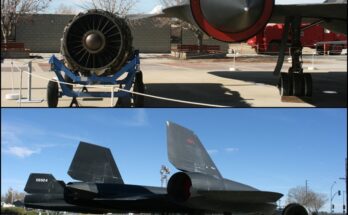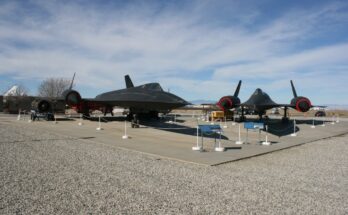
The Lockheed U-2D is part of one of the most remarkable aircraft families in aviation history, a line of high-altitude reconnaissance planes that helped shape global intelligence gathering during the Cold War and beyond. While most people know the original U-2A and the later U-2R/Dragon Lady variants, the U-2D represents an important transitional model—one that expanded the aircraft’s capabilities and paved the way for future developments.
The original U-2 was designed in the mid-1950s by Lockheed’s Skunk Works under the direction of the legendary Clarence “Kelly” Johnson. Its mission was simple but risky: fly high enough to evade interception and gather photographic intelligence over denied airspace. The aircraft could operate above 70,000 feet, where the sky turns dark and the curvature of the Earth becomes visible, putting it beyond the reach of most fighters and missiles of the era.
The U-2D entered service as an upgraded two-seat variant, created to support specialized training and advanced reconnaissance missions. Unlike earlier single-seat models, the U-2D added a second cockpit, allowing instructors to fly with student pilots or enabling mission specialists to operate complex sensor equipment in real time. This made it especially valuable as the aircraft’s intelligence-gathering systems became more sophisticated.
Externally, the U-2D looked similar to earlier versions, with its long, glider-like wingspan—over 100 feet—and narrow fuselage designed to maximize lift at extreme altitudes. Its size and shape gave it excellent endurance but also made it notoriously difficult to land. Even experienced pilots had to “fly the plane onto the runway” using a chase car and ground crew guidance, since its bicycle landing gear and light wing loading left little margin for error.
The real improvement in the U-2D was hidden inside. Its updated avionics, cameras, and electronic intelligence sensors allowed the aircraft to collect multiple types of data in a single mission. It could photograph missile sites, monitor radio transmissions, and track radar networks all at once, making it one of the most valuable intelligence assets available before the age of satellites.
The U-2D also helped bridge the gap between manned aircraft and later drone-based reconnaissance programs. Its success proved that modular payloads—swappable pods and sensors—were the future of surveillance aviation. That same design philosophy carried over to later U-2 models, which are still flying today more than six decades after the original took off.
Only a small number of U-2Ds were ever built, and surviving examples are rare. One of them can be seen at Blackbird Airpark in Palmdale, California, displayed alongside the SR-71, A-12, and D-21 drone—an entire lineage of Skunk Works intelligence aircraft in one place. It’s a reminder that while the U-2 may not be as fast or visually dramatic as the Blackbird, it has lasted longer and arguably had just as much impact.
Quiet, reliable, and unique in its purpose, the U-2D represents a key moment in the evolution of aerial reconnaissance—proof that sometimes the most valuable aircraft aren’t the ones that break speed records, but the ones that never stop flying.


